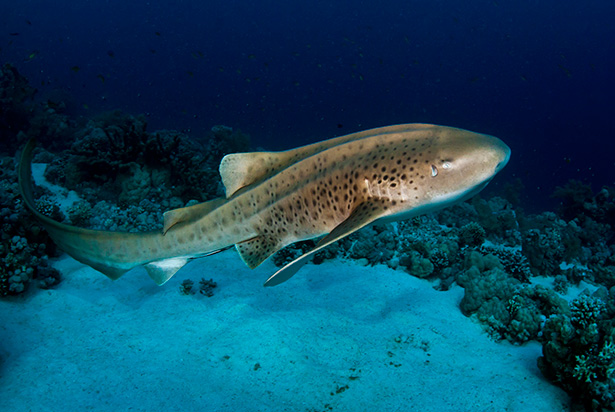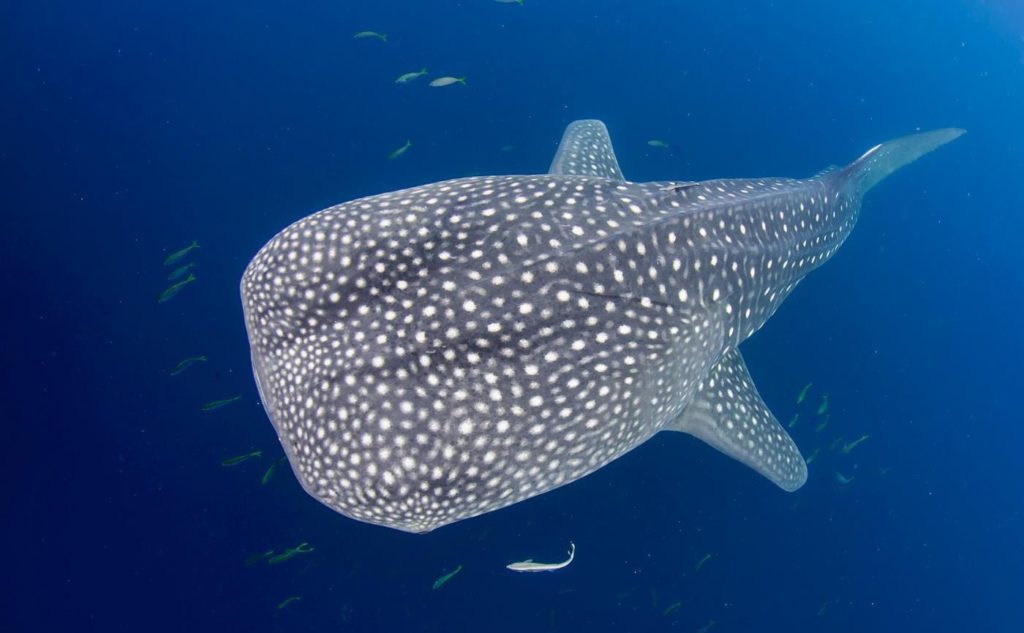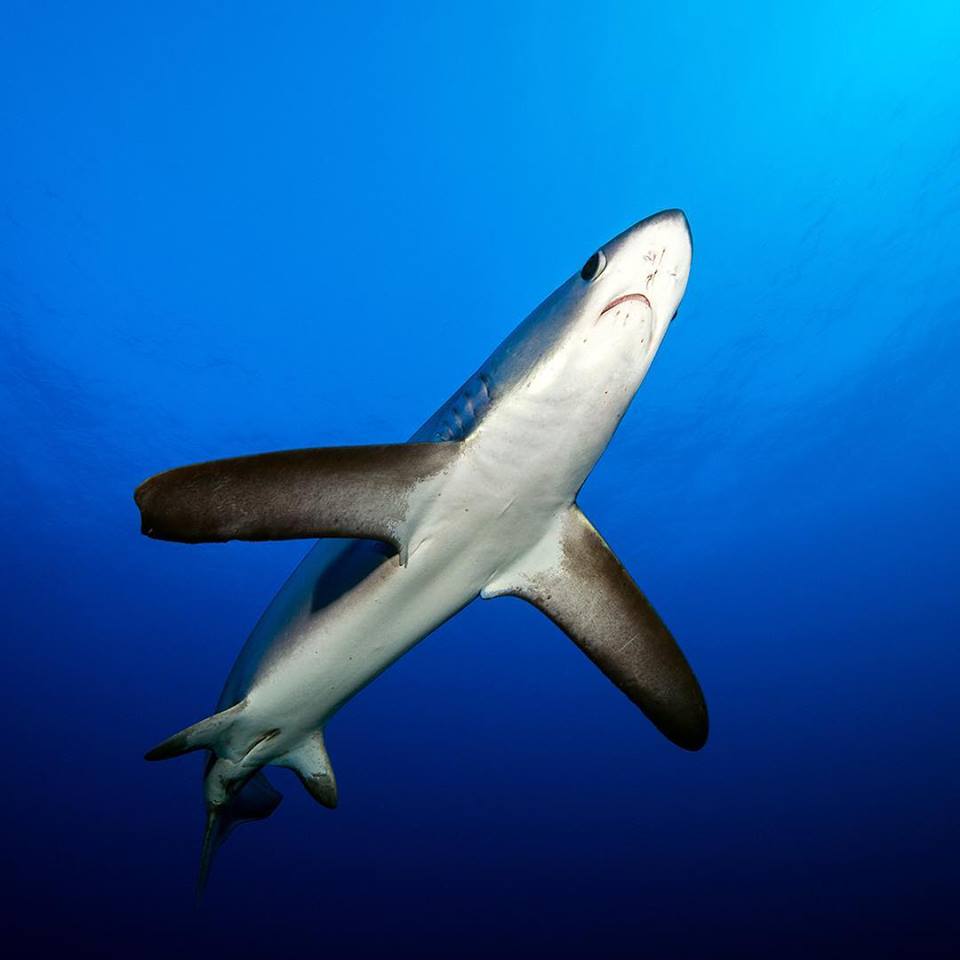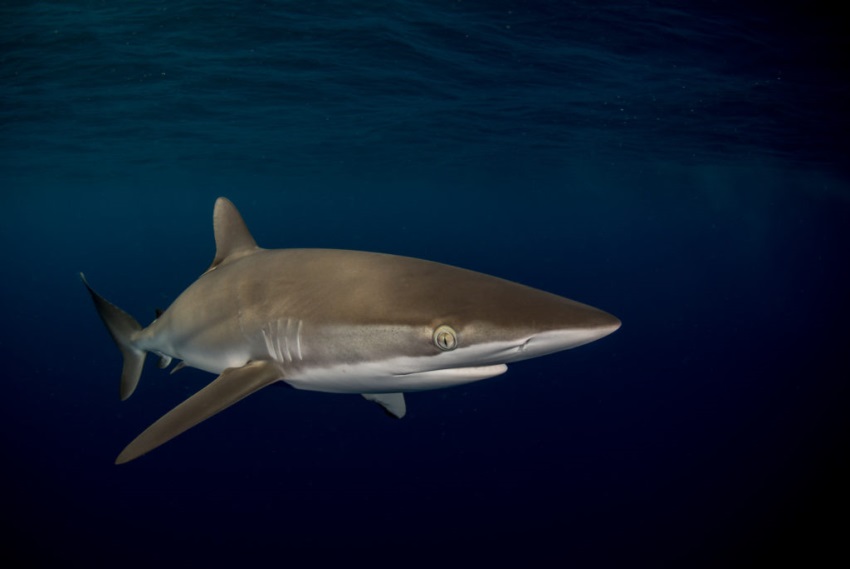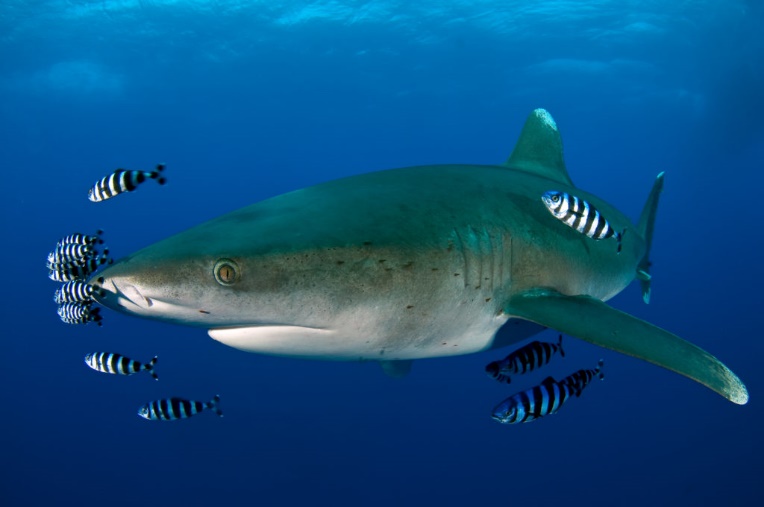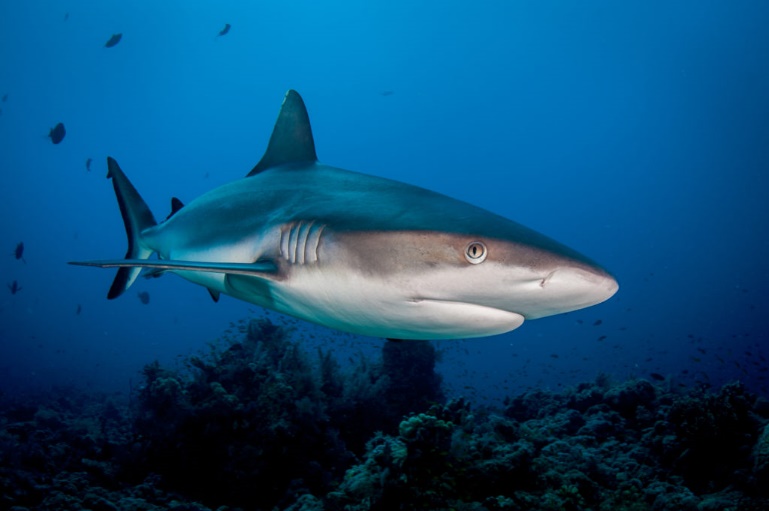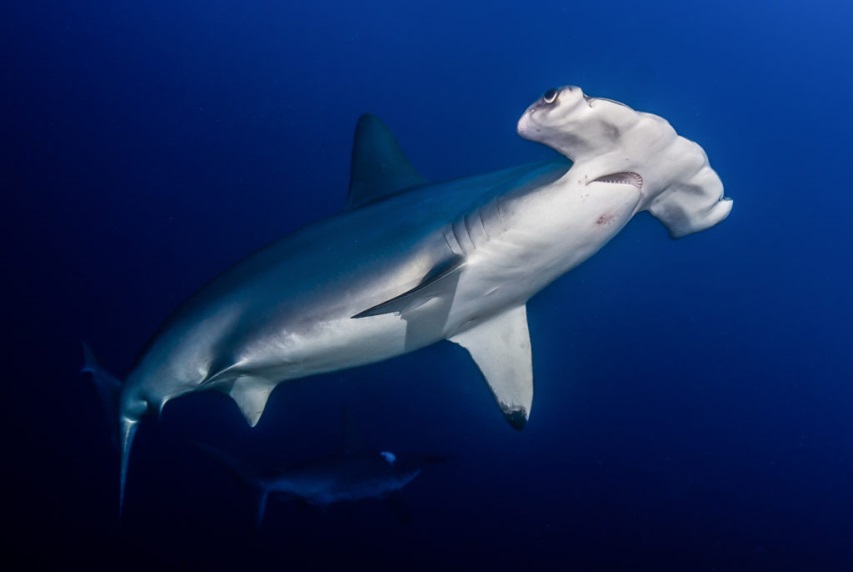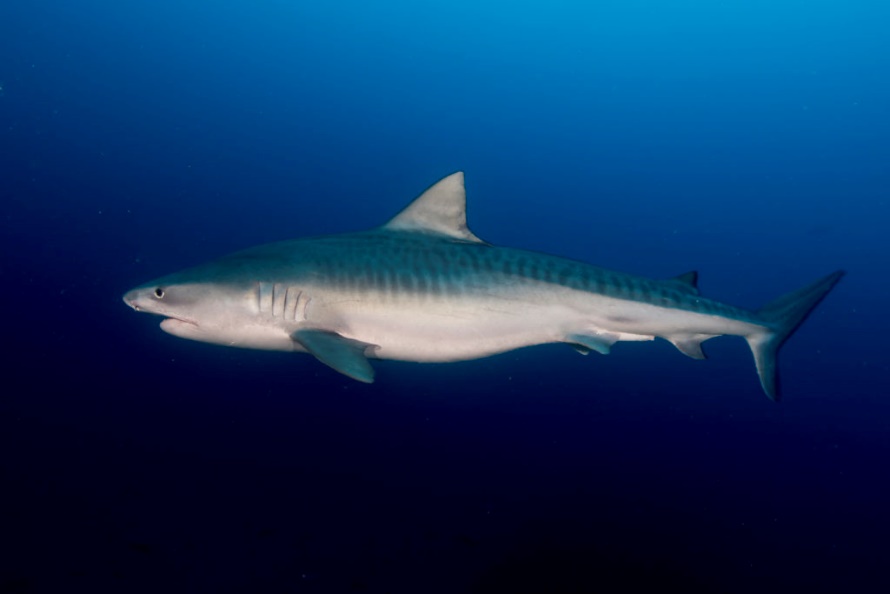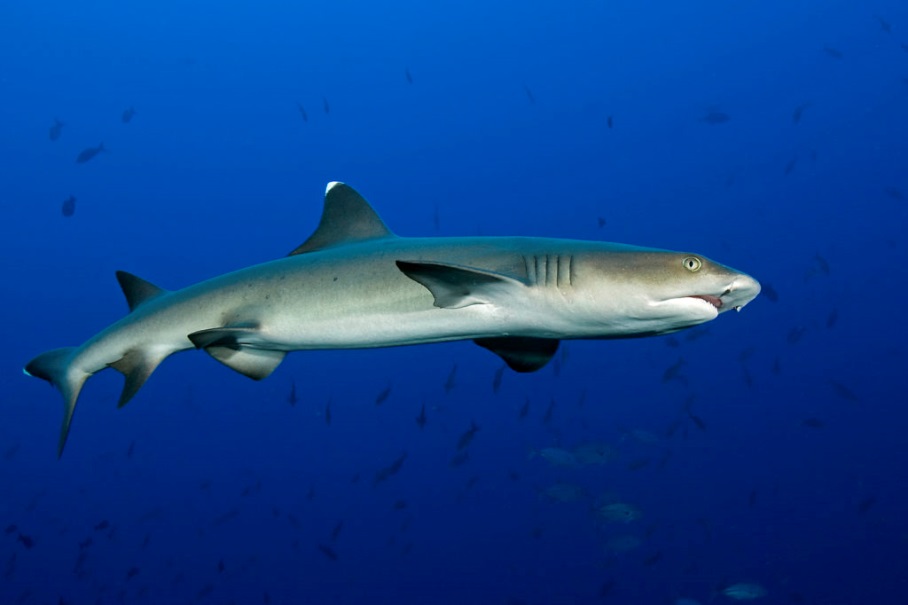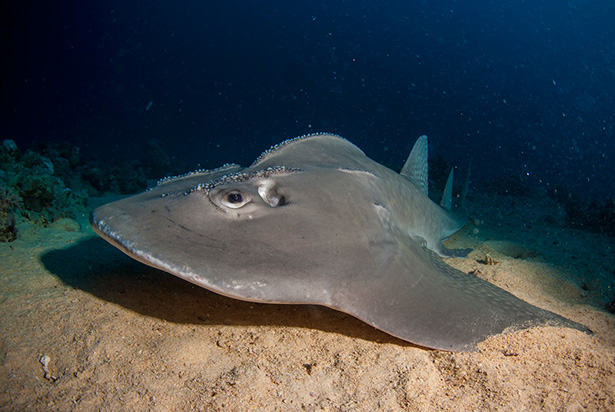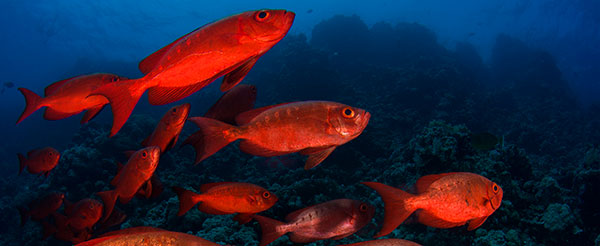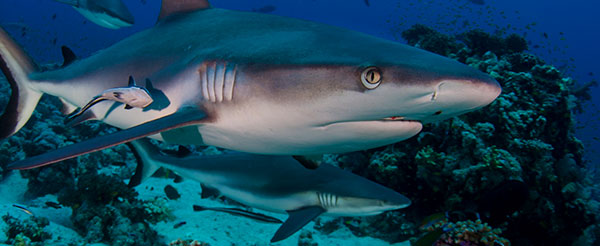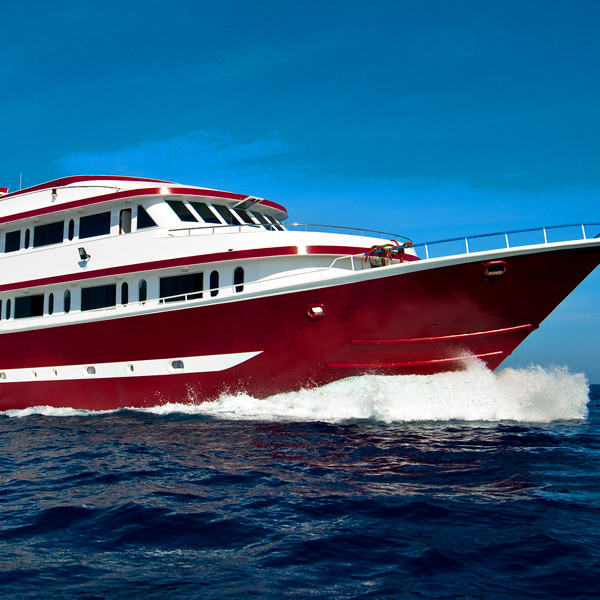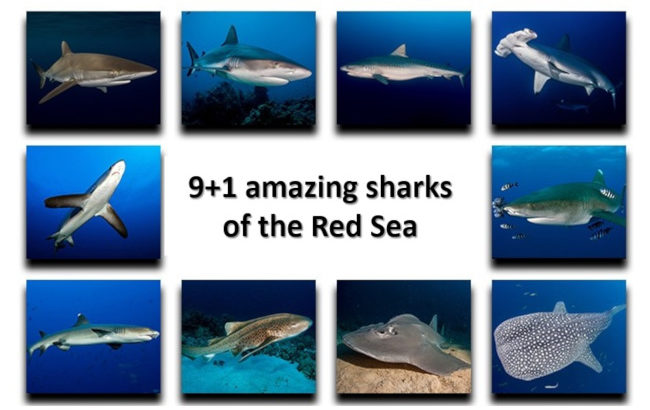
9+1 amazing sharks of the Red Sea
Over half of the Earth’s surface is covered by water and there is only one place that is not really paralleled by any other, and that is the Red Sea, hidden between vast land strips of scorching sand. Who would imagine that a prolific and vibrant marine life thrives beneath the surface of the sea, deep in the water, in this empire of deserts.
Eight countries share a border with the Red Sea (Egypt, Israel, Jordan, Sudan, Eritrea, Saudi Arabia, Yemen, and Djibouti). The Red Sea stretches to 1,900 km and its width is 300 km at its widest point. The average depth is around 50 m but its deepest point lies at 3,039 m.
It is not surprising that tourists and divers, seeking to discover the deep blue, are drawn here like magnet by the magical marine life that the sea harbours underneath its surface. One of the most sought-after experiences divers crave is the chance to meet up with sharks.
While more than 400 shark species exist in the world, only a small fraction of them ever attack people, and even in those cases, they are mostly provoked or the animals feel threatened. The largest animal of the fish species, the whale shark, for example, is vegetarian, and eats planktons and algae, and is harmless to humans. Divers are able to freely swim around and among them.
Contrary to popular culture, sharks do not attack people, since humans are not part of their natural diet. Problems could start when they are being fed to attract them close to divers. When feeding, the shark’s brain flips into a different gear and it is all for grabs, human or not. They become aggressive and only focus on the feeding. If divers happen to be in their vicinity during this time, there is a good chance of getting bitten or even worse. Sharks can also become defensive and go on the attack if they feel threatened, if they are being harassed, if they become confused, or if their young ones are threatened, just to name a few instances. The moral of the story – respect the sharks’ habitat, you are the guest and as such, show respect and humility.
And now introducing 9+1 sharks that are most commonly found in the Red Sea
1. Leopard shark
Despite its name, it is a relatively calm predator. Its main food source are octopus, crabs, shell fish, crustaceans, and smaller fish. It does not attack people, if anything, avoids contact with humans because its fiercest hunters, aside from larger shark species, are fishermen. The female tends to be more active, the male is more reserved, and more skittish. It does not need to swim constantly for survival, so it often rests at the sea bottom. It grows to an average length of 1.2 – 1.5 m but it can also reach 2.1 m in some cases. The intricate motifs on its skin is quite different from the usual grey colour of shark skin. If you want a chance encounter with them, they can be found mostly in the North and the Tiran regions in Egypt.
2. Whale shark
It is the world’s largest fish specie. It can reach up to 12 m in length on average, but much larger specimens are not unusual either. It can choose from a wide array of foods but it is partial to plankton. It poses no danger to humans. An alarming fact is that the sizes of caught specimens have been decreasing in recent years, which indicates over-fishing and as a result, the specie has now been categorised as endangered. The mating and reproduction process of the whale shark is quite a mystery as females and males live in separate communities. According to scientists, it is ovoviviparous and gives birth to live pups though the young ones have rarely been observed. It can be found by open-water reefs in plankton-rich waters.
3. Thresher shark
The thresher shark belongs to the group of large-bodied sharks, yet it is quite timid in nature. The size of adult male and female sharks are pretty much the same. The average length of the adult male is around 2.6 – 3.3 m, while the adult female’s is around 2.7 – 3.6 m. The longest known specimen reached 3.95 m. The thresher shark’s unique characteristic is its proportionately long tail fin which can often grow as long as the body of the shark itself. It is an ovoviviparous specie, giving birth to live pups. Intra-uterine cannibalism, or ovophagy, is also representative of this shark specie. The young fish hatch while still inside the mother and start feeding on the unfertilised eggs. This results in a small litter, usually only 2 – 4 pups that are well developed, reaching 0.9 – 1.4 m in length. Of the reefs in the Egyptian Red Sea, it can be observed at the Brother Islands, especially at Small Brother.
4. Silky shark
The silky shark can be found in all tropical and warm-climate waters around the world. If you want to meet up with them in the Red Sea, head down to Sudan, and to the southern region of the Red Sea. It is very inquisitive and it often approaches visitors. It grows in length to about 2.5 m but it can be as large as 3.5 m as well. The heaviest specimen every caught weighed 346 kg. It has a robust, long body which ends in a rounded nose. This shark got its name from the smooth and silky texture of its skin. It prefers the open waters and depths of up to 500 m but it can swim as deep as 4,000 m. The life expectancy of a silky shark is about 25 years.
5. Oceanic white-tip shark
It is a good friend of divers. It is not aggressive at all and tends to approach divers up close. It prefers the open waters and can be seen at Elphinstone, Daedalus, the Brothers in Egypt, and by the southern reefs in the Red Sea. It is about 1.5 m long, or even larger than 2 m, and weighs close to 20 kg. The white-tip shark can be easily identified by its white-tipped round fins.
6. Grey reef shark
Tropical waters are the usual home for this shark but you may very well run into it in the Red Sea as well, especially around Sanganeb and Shaab Rumi in Sudan. Its habitat is close to the coral reefs, and this is where it hunts for its prey. It tends to live near the drop-offs of outer-edge reefs and prefers moderately deep waters, usually between 20 – 60 m, though they have been found as deep as 1,000 m too. In the west it can be found between the Red Sea and the Indian Ocean’s East African shores, and in the east all the way to Polynesia. It must remain in constant motion. If it stops moving, it sinks and dies. When taking a breather, they float and relax in currents.
7. Scalloped hammerhead shark
This shark’s unique feature is it hammer-shaped head. The width of the head, depending on the species, is about 20 – 30% of the animal’s entire length. The eyes are placed at the far ends of the head, and provide a 360-degree vision and excellent depth perception. A transparent membrane or eyelid protects the eyes during hunting and feeding. It usually cruises in deeper waters and in large schools, often counting up to 100 individuals. Its main food supplies are smaller sharks (even small hammerheads at times), manta rays, bony fish, and cephalopods. Females give birth to live young ones, and fertilisation happens internally. There are usually 15 – 30 pups in one litter, and the little scalloped hammerhead sharks can be as long as 43 – 55 cm.
8. Tiger shark
The tiger shark grows to a length of about 3 – 6 m but can be as large as 9 m. It weighs around 1 tonne. It is a solitary and nomadic animal, spending most of its life roaming from place to place. It is quite inquisitive and as such, it likes to “taste” everything, just like the great white. Its massive built and the unique patterns on its skin make it easy to identify. It is considered to be the second most dangerous animal to humans after the great white. In Egypt, it can be found cruising near Safaga and Elphinstone.
9. White-tip reef shark
It is one of the most often sighted sharks by divers. You can meet up with them pretty much at any coral reef. It rests in the caves and larger crevices near the reefs during the day, often in groups. It comes out of hiding during the night to go on a hunt for reef fish, octopus, crayfish, and crabs hiding among the corals. The white-tip reef shark often hunts in large groups. It sniffs out its prey, approaches it, and if necessary, breaks away the corals to get to it. It got its name from the white spots on the edges of its fins.
+1. Guitarfish
The guitarfish, or shark ray, is a peculiar creature, a mix between a shark and a manta ray. The average size of this cartilaginous fish is 1.5 – 1.8 m. The largest specimen every caught was 3 m long and weighed 135 kg. It has a wide, flat head and a rounded snout. Two sharp dorsal fins rise out of its body, while the pectoral fins are large and wide. Its habitat is near the coral reefs of tropical waters, in depths of 3 – 90 m. It is mostly a bottom dweller, preferring sandy and muddy bottoms, and its diet usually consists of crabs and shell fish. On the northern routes of our tours in Egypt you will find it on the sandy sea bottom.
And finally, here are 10 typical misconceptions about sharks (source: Wikipedia)
“All sharks are dangerous.” Of the 370 known shark species, about 80% is physically incapable of harming humans, or rarely ever meets them. The whale shark, largest in size, growing to a length of 15 m, for example, feeds mostly on planktons, and is completely harmless to humans.
“Sharks are voracious eaters, they must constantly feed.” As all animals, sharks must also eat periodically, as their metabolism dictates. Humans are not their main source of food. They feed on other fish, shell fish, and fatty animals like seals.
“Most shark attacks are fatal.” In reality, about 85% of people attacked by sharks, actually survive the attack. Most large-bodied sharks initially only bite their prey to prevent it from moving and will try to actually eat it later on. This means that most potential victims do have a chance to get away and to survive the attack. The groups who are most often targeted by sharks are surfers (49%), swimmers, bathers (29%), scuba divers (15%), and paddlers (6%). These encounters are more out of curiosity than for feeding purposes.
“Lots of people are killed by sharks.” The chance of being attacked by sharks is very minute compared to other rare ways of being killed like by lightening or from dog bites. On average, 5 – 15 people die worldwide as a result of shark attacks. And at the same time, humans kill close to 100 million sharks every year, in large due to commercial fishing that sharks often fall victim to. Compared to other fish species, the reproduction speed and the growth of sharks is quite slow, and as a result, many shark species are already among the endangered species or are very much on their way to join this un-coveted list.
“Great white sharks can often be found near beaches.” Great whites are a relatively rare sight as they prefer deeper and colder waters. It is unusual to spot them by the beaches. This myth can be attributed to Hollywood and the false depiction of these animals (i.e. from the movie Jaws) because of their frightening look.
“There are no sharks is fresh waters.” A special osmotic system makes it possible for some species like bull sharks, for example, to tolerate a wide range of salinity. These species are able to swim up rivers and into lakes.
“Sharks must continuously swim.” Actually, there are several species of sharks that are able to stop moving and rest on the sea bottom. Opening and closing their mouth enables them to take on sufficient amount of oxygen. Sharks are relatively slow swimmers in general, reaching cruising speeds of about 9 km/h however they can rev it up to about 37 km/h as well.
“Sharks have poor eye sight.” The underwater vision of sharks is about 10 times better than of humans. Sharks can also see colours.
“Eating shark meat makes you more aggressive.” There is no scientific proof to confirm this. Unfortunately to many, shark meat is very appetising due to its mild taste, low fat content, and white and firm flesh.
“Nobody wants to be in waters full of sharks.” Suspicion and fear is often replaced by curiosity in people towards an advanced predator that has existed for millions of years and whose role in maintaining the balance in the oceans’ ecosystem is vital. There are many places around the world that offer a glimpse into the lives of these amazing creatures up close, within a safe and protected environment (i.e. cage diving).
Photos by Daniel Selmeczi
Photo of thresher shark by Martin Strimiska
